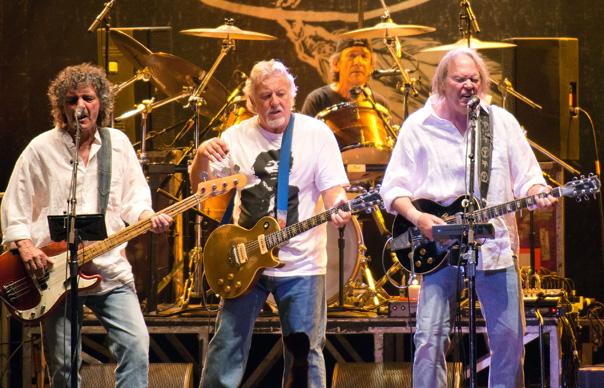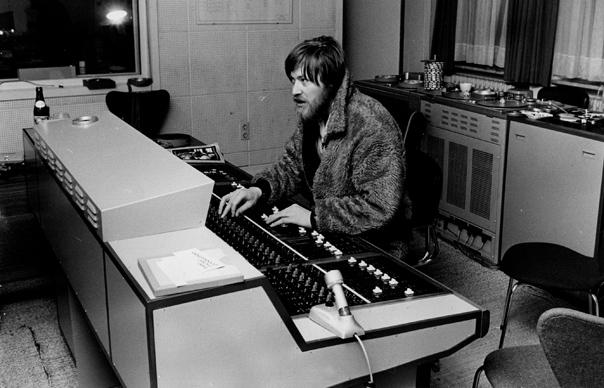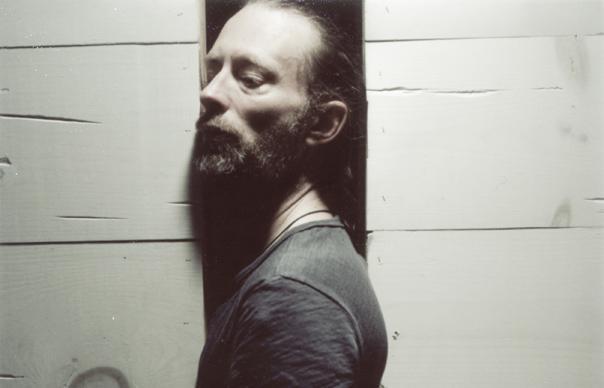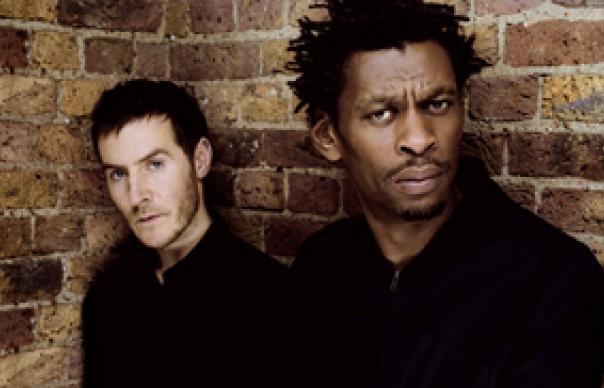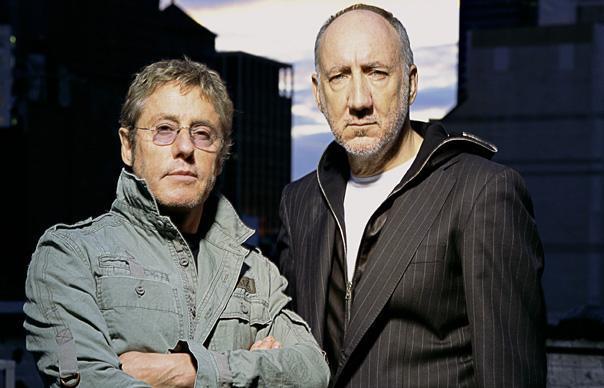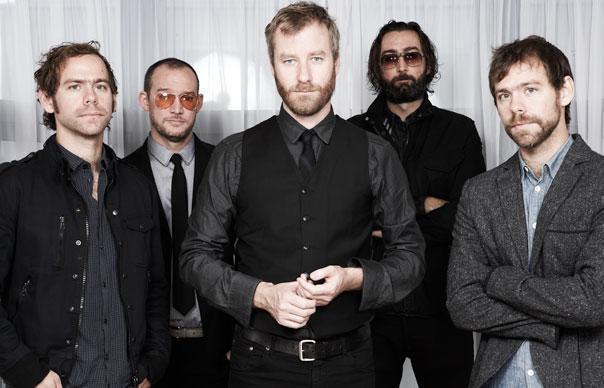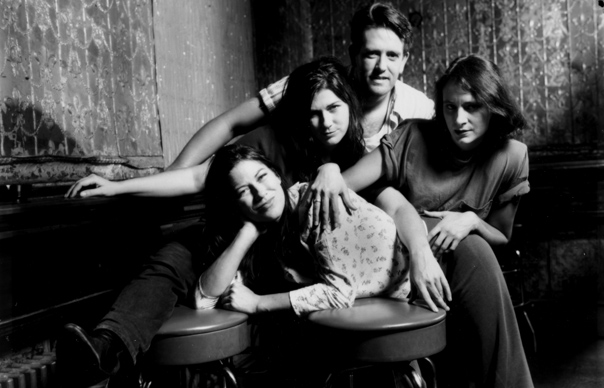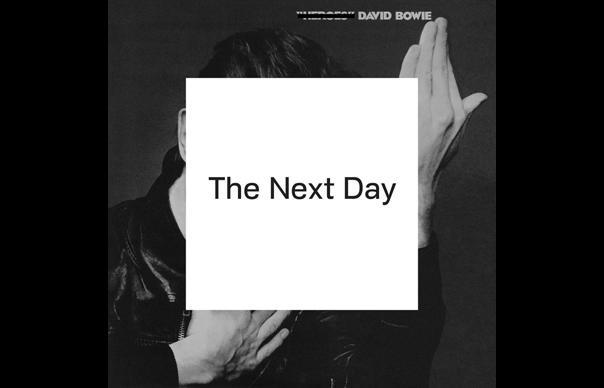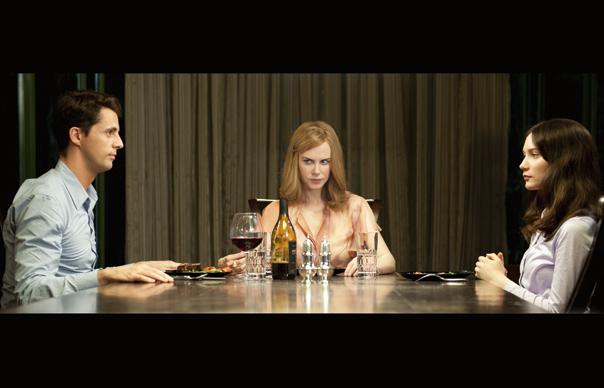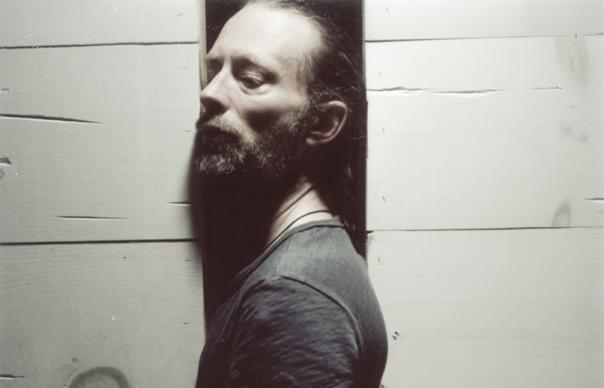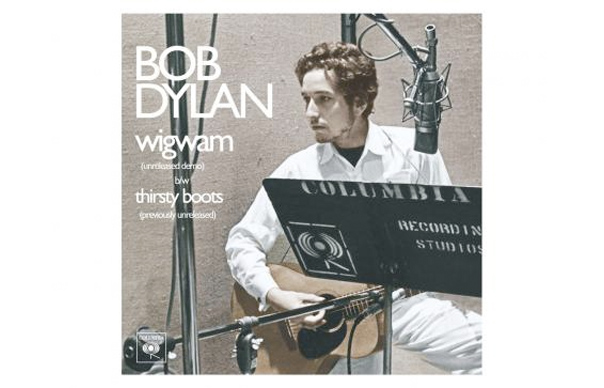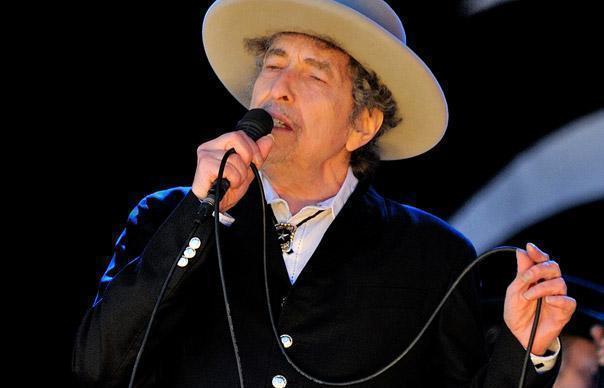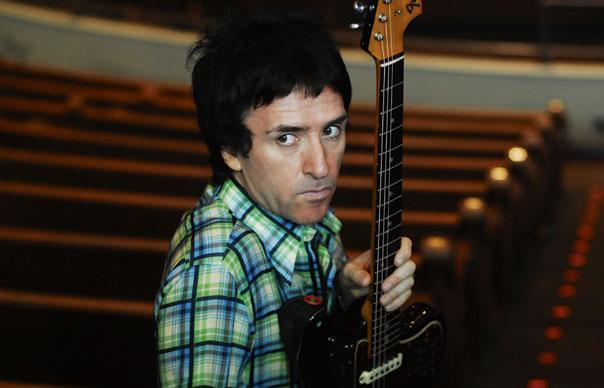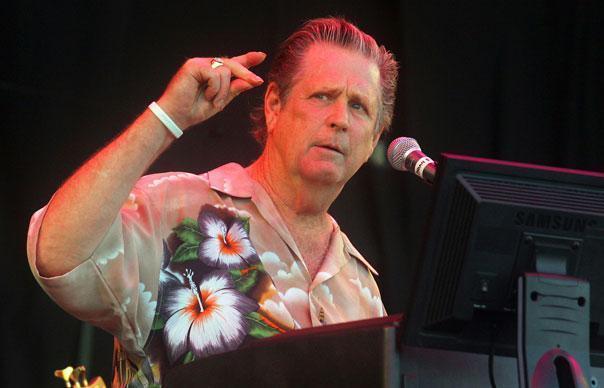The Columbia Albums Collection, the new 17-album boxset from Blue Öyster Cult, is reviewed in the new issue of Uncut, dated April 2013, and out now. The collection unsurprisingly includes the band’s signature hit, ‘(Don’t Fear) The Reaper’, and in this piece, originally published in Uncut’s November 2010 issue, the band discuss the writing and recording of their “trans-awesome” tune, perhaps the spookiest FM staple ever. “Nothing like The Byrds”, apparently… Words: Jaan Uhelszki
_______________________
“We got tarred with the whole devilry thing,” remembers Blue Öyster Cult’s singer Buck Dharma. “Were church leaders taking our records and burning them? Yeah. There was a public outcry.”
Dharma – aka Donald Roeser – is telling Uncut about the backlash that greeted the band’s 1976 breakthrough single, “(Don’t Fear) The Reaper”. The reason? Many misinterpreted the song as being about suicide – something Dharma dismisses. It’s a love story, he insists. Diagnosed with an irregular heart rhythm, he was “contemplating my own mortality, and I thought, ‘Gee, wouldn’t it be great, even if you died, that your love would survive?’”
Instances of record burning aside, “(Don’t Fear) The Reaper” nevertheless transformed Blue Öyster Cult’s career. They started out in 1967 in Long Island as Soft White Underbelly; the name change came in 1970, thanks to producer-manager Sandy Pearlman. Along the way, they found admirers and collaborators in Patti Smith, Michael Moorcock, Stephen King and rock critic Richard Meltzer. But despite such storied friends – and Pearlman’s ambitious plans to present Blue Öyster Cult as America’s answer to Black Sabbath – the band remained very much a cult concern.
“Our first record [Blue Öyster Cult, 1972] sold 100,000 copies in the first year,” says Dharma. “Each one after that doubled the sales again, but we didn’t have a gold record until 1975.”
“(Don’t Fear) The Reaper” reached No 12 on the Billboard charts in America and has become a regular fixture in horror movies and TV shows like Hallowe’en, True Blood and Supernatural. In 2000, Will Ferrell debuted a Saturday Night Live sketch parodying “…Reaper”’s recording, with Christopher Walken as a producer and Ferrell as fictional band member, Gene Frankel. Walken’s pleas for “more cowbell!” made the sketch a massive hit and gave the song a new lease of life. And who really played cowbell remains a point of contention within the band itself…
_______________________
Donald “Buck Dharma” Roeser: A lot of my strongest stuff is like automatic writing. I came up with a guitar lick and the first two lines of the lyric in about five minutes.
Albert Bouchard: The first time I heard it was May of 1975, and Donald called me up and said, “I got this new riff,” and played it for me over the phone. Two weeks later we were out on the road and Donald played me the demo. I was like, “Holy crap! This is awesome. This sounds like it could be a hit record.” Not everybody in the band was on board right away. Some people thought it was real soft.
Eric Bloom: I remember hearing Don’s demo and thinking it was a good song, but it wasn’t really like anything else we’d done before. I know both Alan Lanier [keyboards/rhythm guitar] and I thought it was a bit light compared to our earlier work.
Sandy Pearlman: I thought it was trans-awesome. Rarely did any of them write by themselves before this. “…Reaper” was a watershed in the development of their song writing. It was definitely coincident with the appearance of multi-track home recorders on their doorstep.
Albert Bouchard: Everybody got Teac four-track tape recorders. Now we could record multiple parts one on top of the other, the way it’s done in a studio. That changed the way we wrote because we all brought in songs with much more realised arrangements than previously.
Eric Bloom: The four-tracks gave everyone a chance to write on their own. Don’s always been a good engineer and his home demos always sounded slicker than anyone else’s. Although we’d always written as an ensemble before, everyone always brought in their ideas and kicked them around. Don brought in “…Reaper” essentially finished.
Albert Bouchard: Donald didn’t really ask for any help. I gave him some thoughts, which he totally didn’t use.
David Lucas: [co-producer] At the time “…Reaper” was a little bit long and so I made some suggestions for edits, trim it down. We trimmed it down and went into the Record Plant.
Joe Bouchard: We chose the Record Plant because John Lennon had worked there. Everybody had worked there, Hendrix, Aerosmith, Gregg Allman, but it was the Lennon vibe we liked. We’d go out into the lounge and watch The Exorcist on Lennon’s videotape machine that he left there, while we were recording. I think that rubbed off on “…Reaper”.
Buck Dharma: David was our co-producer – a very successful jingle guy who we met at a swingers’ party in the early ’70s.
David Lucas: I made a deal that I would do all music production, be in charge of music and recording and sounds and Sandy would mix. So he would stay out of the studio when we made the music, and I stayed out of the mixing room when he mixed the music. All of the songs that I ever produced with them were smooth as silk. I would stand at a podium and I would dance and do my conducting thing, just to keep the band alert, and to keep the rhythm.
Sandy Pearlman: “…Reaper” benefited from a tremendous infusion of new recording technology that the Record Plant, which was one of the three or four or five best and most advanced studios in the world, had. It made all sorts of sound manipulation tools available to us that hadn’t
been available just a few years before.
Shelly Yakus [engineer]: The technological things that became available in 1976 certainly helped. Sure, there was equipment that made it easier for me to get what I was looking for. Would I have found another way? But remember, it’s not about the racecar, it’s about who’s driving it.
Sandy Pearlman: “…Reaper” has a tremendously tall soundscape. It has a very high sonic horizon. Not only is there a lot going on, but you can hear everything that’s going on. And given the conditions under which it was made, what’s going on is pretty much going on well beyond your hearing capabilities. So it’s a kind of festival of overtones.
David Lucas: So, whose idea was it to put the cowbell on the track? Mine. The song just floated and the drums were moving along but it didn’t have four-on-the-floor drive. I had a cowbell that I’d been using for years for my studio, went and got it. It wasn’t because I played the cowbell that I cranked it up. Sandy did that because he did the mix.
Albert Bouchard: I played the cowbell. When I got to the session, I thought that David Lucas was going to have me do a shaker because he always put ’em on everything. But he said, “I want you to play a cowbell.” So I played it, and said, “It’s not making it for me.” So David says, “Let’s tape it up and try it again.” We covered it in gaffer’s tape and I used a tympani mallet. Everybody went, “That’s the sound we want.” I see the cowbell as like the relentless march of the clock. The funny thing is that on the Saturday Night Live skit, Will Ferrell is made up to look like Eric. Eric would play the cowbell onstage, but not on the record.
Eric Bloom: Who played the cowbell on it? I did.
Buck Dharma: I think there was some worry within the band, the organisation, that if “…Reaper” was really popular, would that mean that the Öyster Cult was going in a direction that would preclude our more sinister stuff. But my thought was, I can’t help it.
Joe Bouchard: While it fit into the science fiction aspect of what we were doing, sonically “…Reaper” was different. We’d played covers of Byrds songs in our club days, and specifically the pattern came from “So You Want To Be A Rock ’N’ Roll Star”. Then the other part was Hendrix’s “All Along The Watch Tower”, for the pacing and the fills.
Albert Bouchard: When Sandy Pearlman heard it he said, “This sounds like The Byrds.” I was like, what? It sounded nothing like The Byrds!
Buck Dharma: I’ve heard that I dreamt the whole song, including the arrangement. It’s a great story. Certainly, the arc of the story was always in my mind. I started contemplating my mortality, and thought, ‘Gee, wouldn’t it be great, even if you died, that your love would survive.’ I had a heart irregularity and I was all worried about that. It turned out to be not life threatening but it certainly got me thinking about my own mortality. I think that’s one of the attractions about “…Reaper” is that it does resonate with people. People think about this stuff. About dying. After I contemplated my own dying, I didn’t really dwell on it. Whatever dread I had about a short life was eventually assuaged by my existence. But it took 20 years for me to get on the proper medication to correct my arrhythmia.
Joe Bouchard: We didn’t know that Donald had heart problems, so we didn’t know what the inspiration was. We were all getting older, of course. I just thought he was affected by that. For years he was pretty ambiguous about the song, saying: “It’s just another silly love song.”
Buck Dharma: I was kind of appalled that some people thought it was about suicide. If I had thought people were going to think that, I would have changed some of the lyrics. I probably would have taken out the reference to Romeo and Juliet, but it was too good a metaphor.
Joe Bouchard: I don’t know why people connect with it so deeply. It’s a song that’s been able to hold a lot of mystery. Even though I think part of it can be analysed intellectually there’s something still very elusive and otherworldly. There’s always another door opening. Maybe someday it’ll be all figured out.
Buck Dharma: “…Reaper” posits that there is an afterlife and you can cross over. Every once in a while the reality can be rent open and you can actually move within these different realms. When I wrote it, I was hoping it was an afterlife. But now? I’m accepting that this might be all there is. But I’m quite willing to be surprised.
Sandy Pearlman: Did the success of Buck writing “…Reaper” by himself change the dynamics of the band? At the time, I didn’t think it did, but as time went by it was obvious that the market spoke. It was obvious that Donald was much more likely to come up with Top 40 material, radioactive material, than the other guys.
David Lucas: I don’t think the guys in Blue Öyster Cult expected to have a hit. They just expected to have a career.
Buck Dharma: “…Reaper” changed things in the band. It created a little confusion in the band’s identity. After that, Blue Öyster Cult lurched in a direction we’d otherwise resisted, in terms of our conscious image. I never thought we pandered to the occult or violence or any of that. We would deal with these themes much like an author or a filmmaker would. We were hammered as being Nazis or devil worshippers, we like to create mindscapes with our music but it’s not like we lived. It was very uncomfortable because we’re basically just middle-class kids.
Joe Bouchard: The biggest thing to change was we were playing to empty halls, and as soon as “…Reaper” came out we were selling out. It happened like within a week. It’s the power of a hit record.
Eric Bloom: The success launched us into the arenas. A lot of people thought it was our first album and weren’t familiar with the previous four. We were already beginning to headline shows off the success of the earlier albums. Now booking agents advanced that schedule.
Joe Bouchard: Donald resisted the pressure to write Reaper Pt 2. He refused, flat out. Of course, the follow-up for Donald was a tribute to [1950s movie monster] Godzilla.
Buck Dharma: The song has become more like a memorial to people that have passed. It’s something you play or say when someone passes away. And I’m good with that. I’m gonna play it at my funeral.
_______________________
Fact File
Written by: Buck Dharma
Performers: Buck Dharma (vocals, lead guitar), Eric Bloom (rhythm guitar, vocals, cowbell(?)), Allen Lanier (keyboards), Joe Bouchard (bass, vocals), Albert Bouchard (drums)
Produced by: Sandy Pearlman and David Lucas
Recorded at: Record Plant, New York
Released as a UK single: May 1978
UK chart: 16


